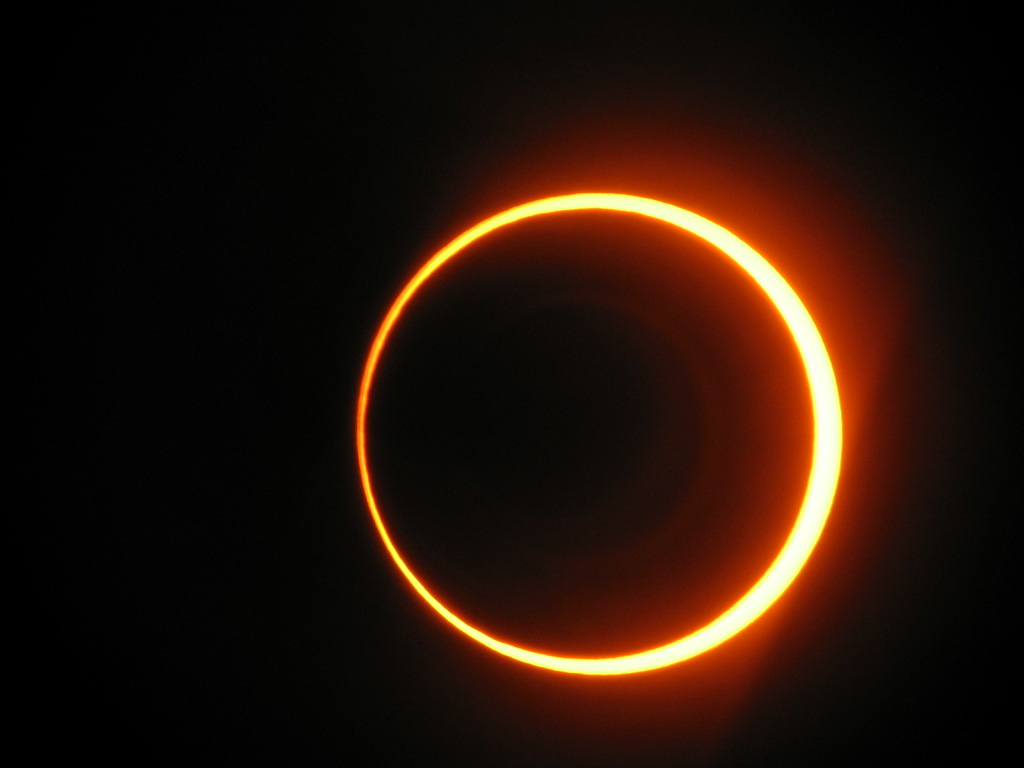NASA Science News | Dr. Tony Phillips | 2012 May 15
Something strange is about to happen to the shadows beneath your feet.Click to play embedded YouTube video.Solar Eclipse over the USA - (Credit: Dr. Tony Phillips / Science@NASA)
On Sunday, May 20th, the Moon will pass in front of the sun, transforming sunbeams across the Pacific side of Earth into fat crescents and thin rings of light.1
It's an annular solar eclipse, in which the Moon will cover as much as 94% of the sun. Hundreds of millions of people will be able to witness the event. The eclipse zone stretches from southeast Asia across the Pacific Ocean to western parts of North America.
In the United States, the eclipse begins around 5:30 pm PDT. For the next two hours, a Moon-shaped portion of the sun will go into hiding. Greatest coverage occurs around 6:30 pm PDT.
Because some of the sun is always exposed during the eclipse, ambient daylight won't seem much different than usual. Instead, the event will reveal itself in the shadows. Look on the ground beneath leafy trees for crescent-shaped sunbeams and rings of light.
Near the center-line of the eclipse, observers will experience something special: the "ring of fire." As the Moon crosses the sun dead-center, a circular strip or annulus of sunlight will completely surround the dark lunar disk. Visually, the sun has a big black hole in the middle.
The "path of annularity" where this occurs is only about 200 miles wide, but it stretches almost halfway around the world passing many population centers en route: Tokyo, Japan; Medford, Oregon; Chico, California; Reno, Nevada; Albuquerque, New Mexico, and Lubbock, Texas. In those locations the ring of fire phenomenon will be visible for as much as 4 and a half minutes.
"The ring of sunlight during annularity is blindingly bright," cautions NASA's leading eclipse expert Fred Espenak of the Goddard Space Flight Center. "Even though most of the Sun's disk will be covered, you still need to use a solar filter or some type of projection technique. A #14 welder's glass is a good choice. There are also many commercially-available solar filters."
[img3="A "ring of fire" over China in 2010."]http://science.nasa.gov/media/medialibr ... re_med.jpg[/img3]Many astronomy clubs will have solar-filtered telescopes set up for public viewing. Through the eyepiece of such an instrument, you can see the mountainous lunar limb gliding by dark sunspots and fiery prominences. It's a beautiful sight. Be absolutely sure, however, that any telescope you look through is properly filtered. Magnified sunlight can cause serious eye damage even during an eclipse.
A safe and fun way to observe the eclipse is to use your own body as a solar projector. For example, try criss-crossing your fingers waffle-style. Rays of light beaming through the gaps will have the same shape as the eclipsed sun.
Or just stand under that tree. The sight of a thousand ring-shaped sunbeams swaying back and forth on a grassy lawn or sidewalk is unforgettable.
Slooh: Live Feed of Annular Solar Eclipse from Japan to U.S., May 20th



